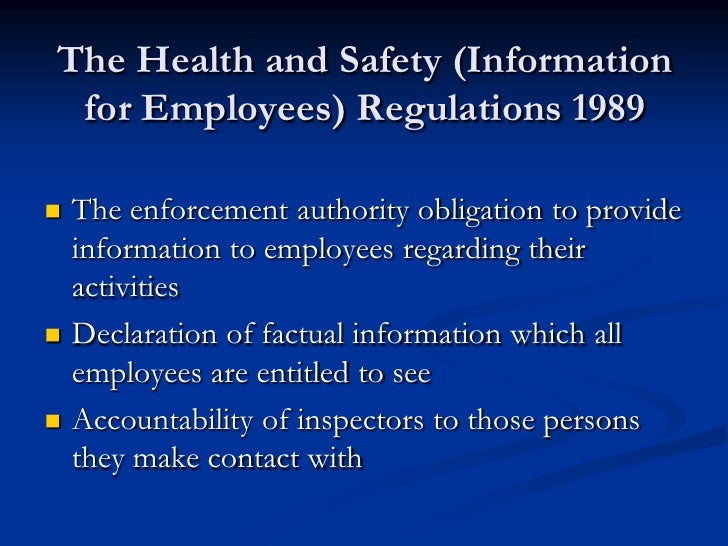
Image source: https://image.slidesharecdn.com/d-part2hsregulations-090313005835-phpapp01/95/d-part-2-h-s-regulations-14-728.jpg?cb=1264789364
A common question amongst business owners is "how much information should we share with the employees?". In businesses with multiple principals, there is often disagreement about sharing the financial information. Some owners want to be transparent, so employees understand their decisions, but others are nervous that the information will be used against them. Transparency into the numbers can yield great results if it's done correctly. Here are some tips for sharing financial results:
1) Never share information on payroll and benefits. It's just not good sense to let everyone have this information. When you do share financial information, make sure this information is concealed. For example, if you only have one employee in sales and sales salary is on the income statement, you'll want to consolidate that account with others to keep the information confidential.
2) Generalized financial information should be sufficient. When you share information, be careful about giving too much detail. Employees probably don't need to know about every single transaction and you'll certainly want to be careful about letting them know how much money the owners are taking home from the business. Sharing key metrics with dashboard graphs and charts will keep employees informed without giving away too much information. Remember: A picture is worth a 1,000 words.
3) Knowledge is power - educate when you share. You're most likely sharing information with employees who didn't go to business school, so just giving them a few graphs or information on profitability isn't really going to be helpful. If you want them to start thinking like business owners, you need to make sure they know what the numbers mean. For example: Telling someone you have a net profit of 10% doesn't mean anything unless they know the target net profit is 15%. Now they understand you aren't as profitable as you should be...and you can have a conversation about how to increase profits.
4) Solicit employee opinions. If you're being transparent with the numbers, it makes sense to give your employees a voice. Your employees are an amazing source of information. You're doing your business and employees a disservice if you aren't giving them an opportunity to help. If you aren't hitting your financial targets, ask your employees for their opinions on how to solve the problem. They know what's working and what's not working in your business. When you step on the transparency bandwagon, be prepared to allow transparency in both directions. It's not just you sharing with your employees; getting them to share is just as important.
5) Explain your decisions. When employees are aware of the financial metrics of the business, it becomes much easier to explain your decisions. If an employee wants a new computer and there's no cash right now, you can put the ball back in their court. You know and they know, it's just not the right time. You can even take it a step further. Let them bring you a business case for the expenditure they would like to make. How will spending this money improve our business and the bottom line? Getting your employees to bring solutions instead of problems...that's priceless.
Transparency with the numbers can be great. It can help you motivate employees and get them thinking like business owners. The trick is sharing enough information to allow your employees to understand the decision making processes, but not so much that you overwhelm or give away sensitive information.